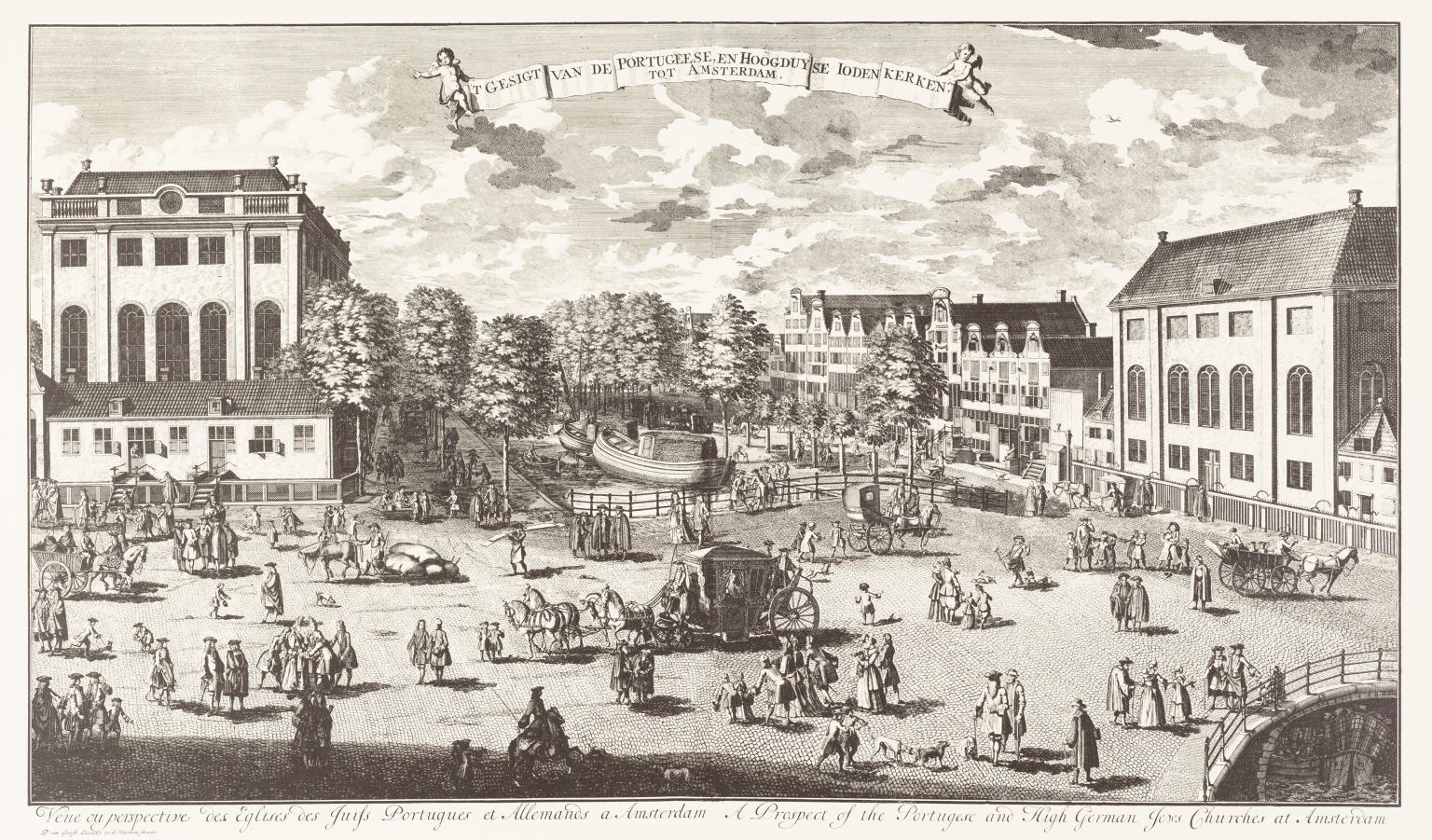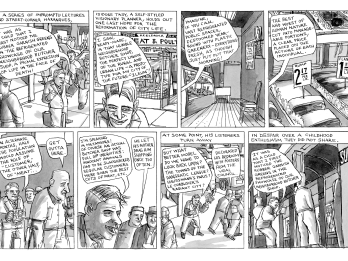Portuguese and Ashkenazi Synagogues Portuguese and Ashkenazic Synagogues in Amsterdam.
Adolf van der Laan
1710
Image

In 1670, Amsterdam’s Portuguese Jewish community commissioned a new synagogue, which, when finished, was the largest in the world. The master mason Elias Bouman, a non-Jew who had helped design the Ashkenazic synagogue across the street, was hired to design and build the structure. Work began in 1671, and the new synagogue, also known as the Esnoga (Ladino for synagogue) was completed in 1675, at a cost of more than 186,000 florins. Reflecting the popular classicist style, also used for many churches, the design of the structure was also inspired by the Temple in Jerusalem. The Esnoga attracted many visitors, both Jewish and non-Jewish. The prominent location of both synagogues in the city made a strong statement about the prosperity and confidence of Amsterdam’s Jewish community.
Credits
Collection Jewish Historical Museum, Amsterdam, M006036.
Published in: The Posen Library of Jewish Culture and Civilization, vol. 5.





